Tonstudio Tessmar: Into the Third Dimension with Sennheiser and Neumann
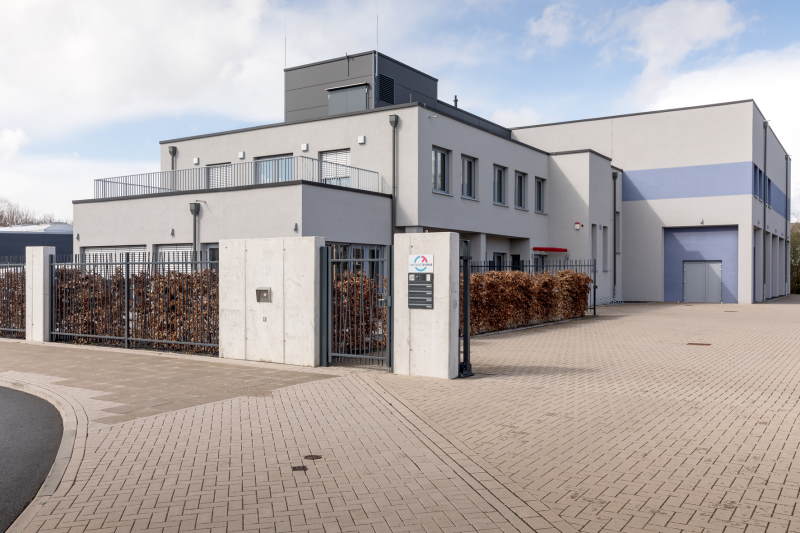
Tonstudio Tessmar is the go to destination for the highest quality sound recordings. Here, carefully selected premium microphones from Sennheiser and Neumann are valued as reliable tools and resources for artistic creation – and also for innovative 3D recordings. These are crafted to create impressive, immersive sound experiences in the controlled acoustics of the studio’s own mastering suite, using a perfectly calibrated set-up consisting of Neumann studio monitors and a Sennheiser AMBEO Soundbar.
“Ever since I was young, I’ve always been fascinated with tape recorders and audio technology in general,” said studio owner Karl Tessmar, describing his passion for great sound. “When Windows PCs finally became powerful enough to make acceptable sound recordings, I set up a small recording studio at home. Over the years, I was able to successively expand the technical equipment and regularly keep it up to date.”
For Karl Tessmar, home recording was primarily a leisure activity, but one that he pursued with considerable passion. The former businessman, who always claims that he is “more technically than musically inclined”, can look back on a successful career in control systems for buildings and switchgear manufacturing. When he retired, Tessmar deliberately sought fresh challenges and decided to professionalize his passion for recording – this time no longer at home, but on a much grander scale.
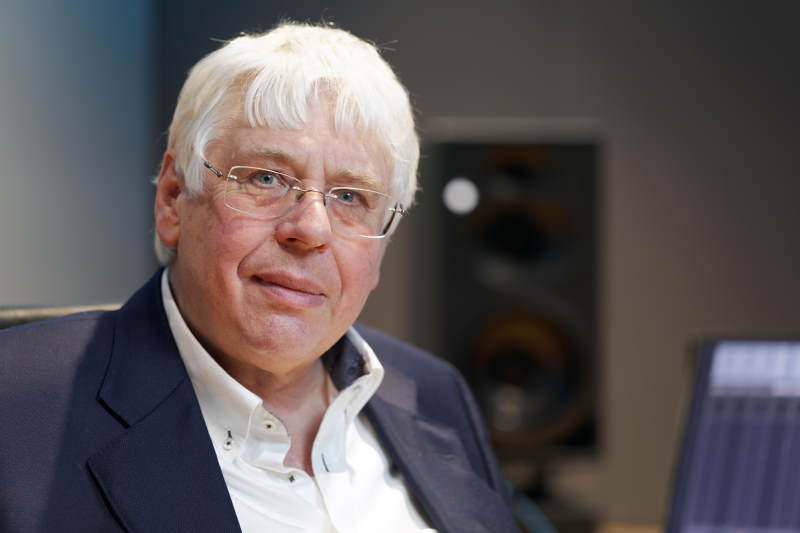
Having found a suitable plot of land on a business park in the north of Hannover, Tessmar gathered a team of experienced specialists, who drove the ambitious project with great commitment. Planning and construction work took around two years. The leaders of the project’s various workstreams got together weekly to exchange ideas and to manage the complex construction process in the best possible way.
Special attention was paid to the large recording studio, which is designed as a solid room-in-room construction that is completely decoupled from the rest of the studio building. All inner walls, the solid floor slab and the ceiling are mounted using precisely matched elastomer elements that decouple any vibration. A further special feature is the sophisticated suspension of the individual foundation elements below the base plate to prevent the free-standing wall liners from tipping.
The room is cooled by convectors which are installed under the ceiling and have cold water flowing through them, thus eliminating the need for cooling fans and avoiding any potential interference from them. The cold air descends and the warm air rises, with a total of five convectors producing an air flow that cools the room completely silently.
The adjoining control room is separated from the musical activities in the recording studio by three panes of glass (each 18 mm thick) mounted one behind the other about 20 cm apart. It goes without saying that the control room is also designed as a room-in-room construction with silent cooling.
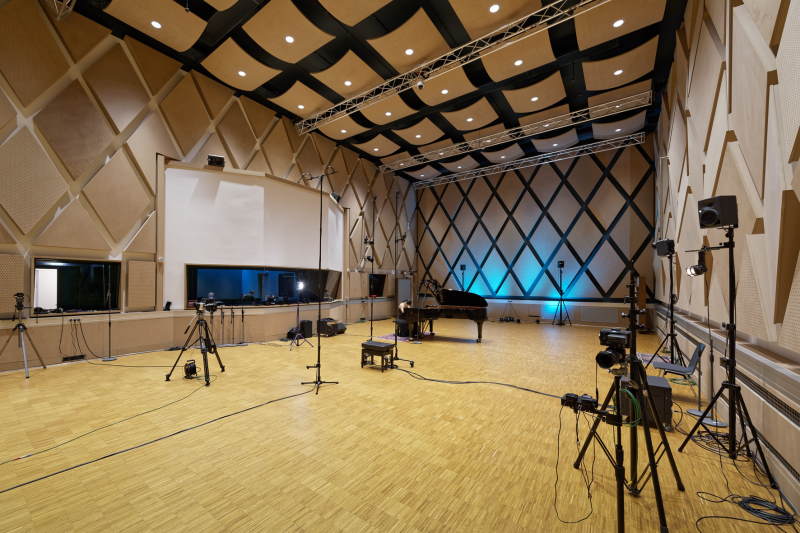
Karl Tessmar is a self-confessed fan of innovative 3D sound worlds, which is why there is nearly always a microphone set-up suitable for three-dimensional recordings installed alongside the conventional microphone arrangement. The microphone array with four Sennheiser MKH 800 TWIN studio condenser microphones goes by the name TWIN Square and was designed and developed by tonmeister Gregor Zielinsky.
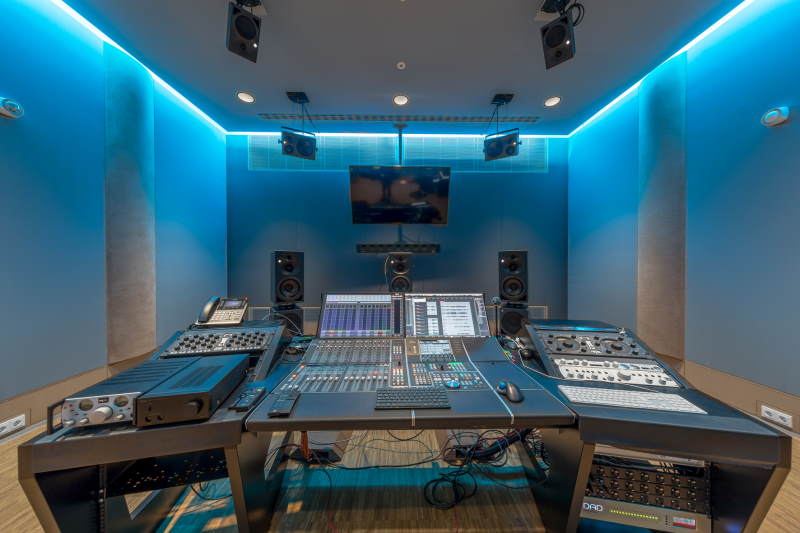
The dual capsules (front/rear transducers with cardioid pick-up patterns) of the four MKH 800 TWIN are arranged at two height levels. The lower level is a classic A/B constellation, with a width that can be varied depending on the type of ensemble being recorded. The upper level of the TWIN Square is noticeably closer together; the elevation is approximately half of the base width and can be adjusted by ear if necessary.

In the TWIN Square array, a runtime-based stereo pair is formed at the front and rear in both the horizontal and the vertical plane. The sound results are impressive and are certainly a match for the cube array concepts that are familiar among sound engineers. However, the square array is much easier to handle and is cheaper to purchase compared to cube arrays with their eight or nine microphones positioned in the form of a cube.
At Tonstudio Tessmar, the eight discrete microphone output signals (four dual capsules) of the TWIN Square are recorded separately for subsequent evaluation. 3D mixes do not generally observe the “pure doctrine” of sound mixing. Instead, the outputs of the square are expanded from an artistic perspective by adding the signals from the spot microphones – a puristic “square only” approach is reserved for special applications. The lower level of the square is not only used in a 3D context at Tonstudio Tessmar, but is also regularly employed as a main microphone (runtime-based stereo) for recording classical music.
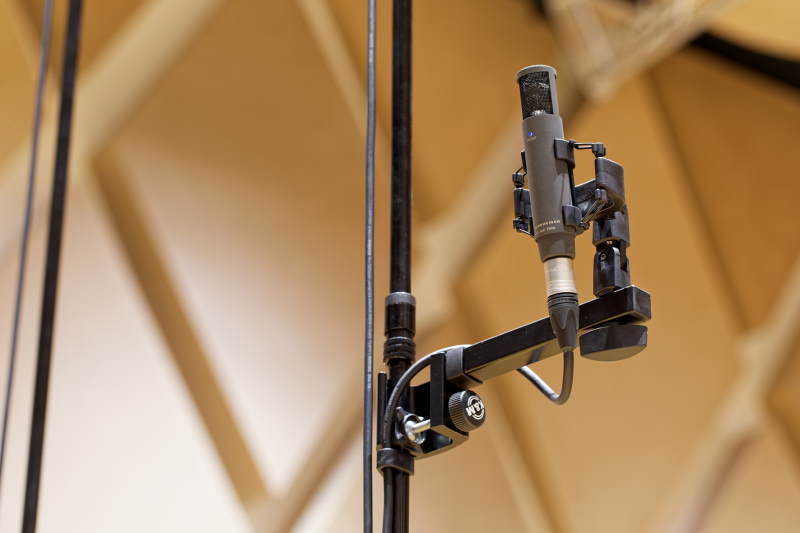
The studio’s own 3D control room, which also serves as a mastering suite, is designed for the reproduction of 9.1 surround (Auro-3D) and 7.1.4 surround (Dolby Atmos). The studio monitors are supplied by Neumann. Placed at ear level in the 3D control room are three Neumann KH 420 tri-amplified mid-field studio monitors (L/C/R) and two Neumann KH 310 three-way near-field monitors (LS/RS) in a 3/2 arrangement in accordance with Recommendation ITU-775. If a Dolby Atmos mix is required, two additional KH 310 studio monitors in the rear area of the room are also used. The bass range (.1) is reproduced by three powerful Neumann KH 870 subwoofers.

For the elevated loudspeaker level, which is installed at a height of around three meters, a distinction is made at Tonstudio Tessmar between an arrangement for the reproduction of Auro-3D (4 x Neumann KH 310, outer loudspeaker circuit) and Dolby Atmos (4 x Neumann KH 120, inner loudspeaker circuit). “In my opinion, Auro-3D is the better sounding format, although Dolby Atmos is likely to have better commercial future prospects not least because of its strong presence in cinemas,” said Karl Tessmar.
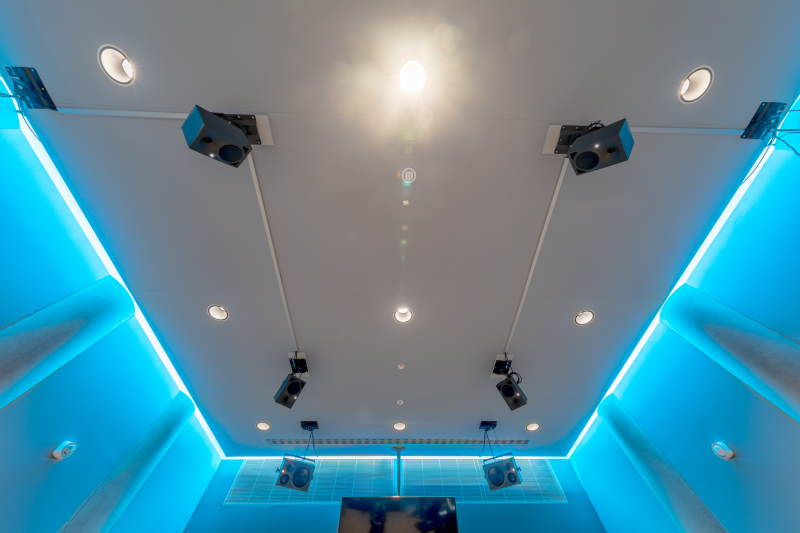
In addition to the Neumann studio monitors, the 3D control room also has a high-quality Sennheiser AMBEO Soundbar, which, in spite of its compact dimensions, offers surprisingly powerful 3D reproduction and is an excellent option for reproducing 3D audio content especially in the home entertainment sector. Its automatic room calibration system adjusts the sound reproduction perfectly to the respective listening environment.
The revolutionary technology of the Sennheiser AMBEO Soundbar, which makes it possible to position virtual loudspeakers in the room by skilfully using reflections and in this way creating fully enveloping listening experiences, was developed in cooperation with the Fraunhofer Institute. In addition to compatibility with Dolby Atmos, DTS:X and MPEG-H, the integrated Upmix Technology transforms stereo content and 5.1 audio into emotional sound that is guaranteed to give any listener goosebumps. The Smart Control App makes operating the system child’s play.
“I personally feel that the Sennheiser AMBEO Soundbar reproduces 80 percent of the experience that you can achieve with separately arranged loudspeakers,” said Karl Tessmar. “However, you shouldn’t ignore the fact that the achievable sound quality depends to a large extent on the nature of the room in which the sound is being reproduced. Of course, you also have to remember that the alternative would be to set up numerous loudspeakers throughout the room, which, in the case of Dolby Atmos, would be at twelve different positions – something that is simply not possible in all cases or not desirable. If you then also consider the compact design and the lower price compared to a solution with twelve single loudspeakers, the Sennheiser AMBEO Soundbar is really an outstanding product!”
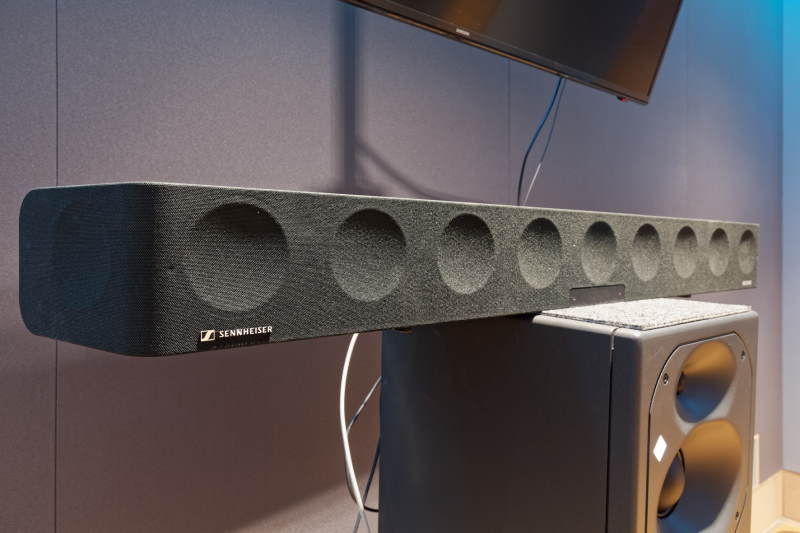
Tonstudio Tessmar sees itself as a full-service provider for high-quality audio recordings. A highlight of the new building in the north of Hannover, which was completed in the summer of 2017, is the 190 m² recording studio, which also features a mobile stage that enables it to be additionally used for concert performances with up to 160 guests.
Due to its variable acoustics, together with the additional possibility to electronically extend the reverberation time, the studio can be adapted to a wide variety of recording requirements. With a height of up to eight metres, the space is equally suitable for classical recordings with orchestras and for jazz and rock/pop productions. The artificial extension of the reverberation time is achieved by two Sennheiser MKH 8090 RF condenser microphones (wide cardioid) mounted on a T bar on a high stand, with the output signals fed to a DAW controller. At the controller, the microphone signals are extensively processed and enriched with the emulation of a world-famous reverb processor, before being carefully dosed (and, of course, completely without feedback!) and reproduced via eight Neumann studio monitors (6 x KH 120 plus 2 x KH 310) distributed around the recording room. The effect is amazing – and if the musicians present have not been told what’s going on, they usually do not consciously perceive the effect and attribute what they hear to the natural acoustics of the room.
Alongside the large recording studio, Tonstudio Tessmar also has two other smaller recording studios for speech and vocals recordings, as well as a control room (2 x Neumann KH 420 as stereo main monitors and 2 x KH 870 subwoofers) with direct visual contact with all recording areas. In addition, there is a generously sized mastering and 3D studio on the first floor of the building.
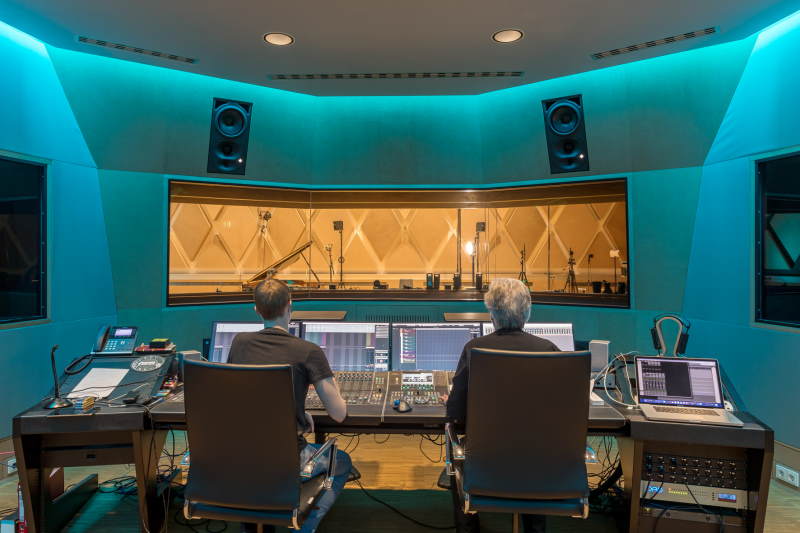
The regular studio team includes tonmeister Gregor Zielinsky (producer, 3D specialist), who focuses in particular on the musical genres of classical and jazz. Sound engineer Ole Bunke is responsible for rock and pop, while also looking after the field of new media and acting as the contact partner for event and marketing activities.
“The thought of being a pensioner who spends all his time playing golf was never my idea of happiness,” said Karl Tessmar with a grin, in response to the question of whether he is satisfied with his busy retirement in the sound studio and the professionalization of what used to be his hobby. “I feel absolutely wonderful and I’m really happy with my decision to build this studio!”
And as if that wasn’t enough to keep him busy, Tessmar has now discovered yet another passion to follow on from his home recording phase: “Some time ago, I started to learn how to play the piano,” he said. “I must admit that I don’t find it quite as easy as I might have done when I was younger– but I remain optimistic …” (laughs).
 How to resolve AdBlock issue?
How to resolve AdBlock issue?